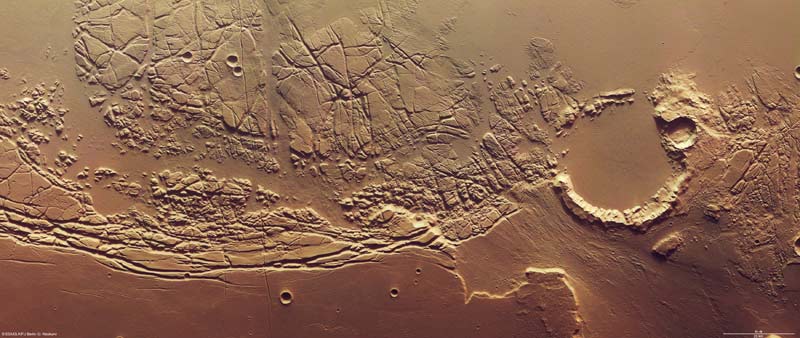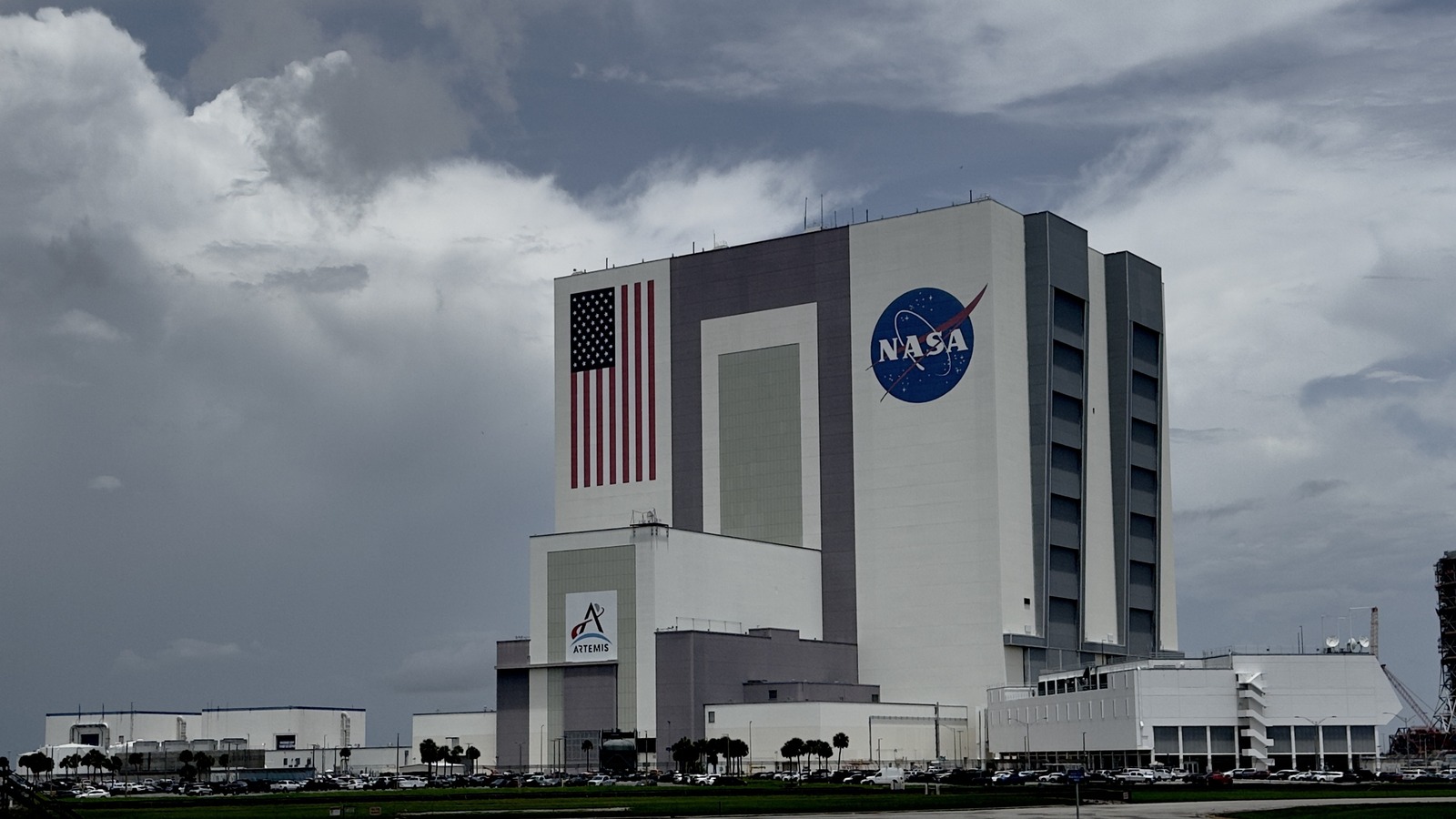Rugged, Scarred Terrain Seen in New Mars Images

A huge crater and other features of a chaotic Martianterrain can be seen in new images of the red planet.
The images, obtained by the High Resolution Stereo Camera(HRSC) on the European Space Agency's MarsExpress orbiter, span the boundary between Kasei Valles and Sacra Fossae,an area about the size of Manhattan.
The upper portion of the image swath shows the easternmargin of KaseiValles and the western margin of the Lunae Planum plateau and the adjoiningSacra Fossae. Kasei Valles is one of the largest outflow channels on Mars,spanning about 1,900 miles (3,000 km), from the Chryse Planitia basin in the northto Echus Chasma to the south.
Sacra Fossae is a fault system that extends for more than 600miles (1,000 km). It is several hundred yards deep and separates Kasei Vallesto the south and west from Lunae Planum. It was named after Isola Sacra, anisland at the estuary of the river Tiber in Italy.
The images show an old 22 mile-diameter (35 km) impactcrater in the north. The crater?s south-western rim is eroded strongly. Theerosion was caused mostly by flowing water. The source of the water was locatedin Echus Chasma, which lies roughly 530 miles (850 km) to the southwest.
The crater floor and the northwestern part of the imagedregion are remarkably flat and have been formed by sediments and basaltic lavaflows originating from the Tharsis volcanic region.
The lower part of the image clearly shows the boundarybetween the heavily cratered plain and the area with numerous fracture zones.Most of the fractures along the boundary are parallel to the edge of the LunaePlanum.
Breaking space news, the latest updates on rocket launches, skywatching events and more!
It is likely that the entire region experienced tectonicstresses as well as ?subrosion? ? a process where subsurface rocks aredissolved and removed by water ? causing overlying strata to collapse partiallyand form chaotic terrain.
Several fracture zones are also visible in the western part.Up to 6-mile (10-km) large areas that experienced ?subsidence? (gradualcompaction and sinking owing to the weight of the layers) are still intact.
- Mars Madness: A Multimedia Adventure!
- Mars in 3-D: Images from Mars Express
- Mars Orbiter Spies Rust Deposits
Join our Space Forums to keep talking space on the latest missions, night sky and more! And if you have a news tip, correction or comment, let us know at: community@space.com.

Space.com is the premier source of space exploration, innovation and astronomy news, chronicling (and celebrating) humanity's ongoing expansion across the final frontier. Originally founded in 1999, Space.com is, and always has been, the passion of writers and editors who are space fans and also trained journalists. Our current news team consists of Editor-in-Chief Tariq Malik; Editor Hanneke Weitering, Senior Space Writer Mike Wall; Senior Writer Meghan Bartels; Senior Writer Chelsea Gohd, Senior Writer Tereza Pultarova and Staff Writer Alexander Cox, focusing on e-commerce. Senior Producer Steve Spaleta oversees our space videos, with Diana Whitcroft as our Social Media Editor.
